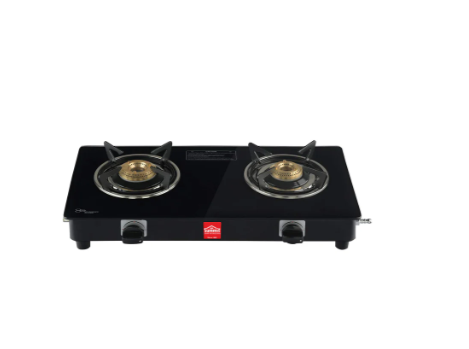How to Use a Gas Stove: A Complete Guide for Beginners
A gas stove is a common kitchen appliance that provides quick and effective cooking. However, if you’re new to using one, it might feel intimidating at first. Don’t worry — with a little guidance, you’ll be cooking like a pro in no time. This comprehensive guide will walk you through the steps of using a gas stove safely and efficiently, from lighting it to troubleshooting.
1. Understanding the Parts of a Gas Stove
Before you begin cooking, it’s important to understand the basic components of a gas stove:
- Burners: These are where the flames come out to cook your food.
- Control Knobs: These knobs allow you to regulate the flow of gas to each burner. Turning the knob adjusts the flame size.
- Igniter or Lighter: Modern gas stoves usually have an igniter built into the control knobs to produce a spark when you turn the knob. If your stove doesn’t have this feature, you’ll need a match or a lighter to ignite the gas.
- Gas Supply: This can be either a natural gas line connected to your home or a portable LPG cylinder.
2. Preparing the Stove for Use
Before using your gas stove, make sure everything is in order:
- Check Gas Supply: Ensure your gas cylinder is full or your gas line is connected and working. If using a cylinder, check the valve to make sure it’s properly connected.
- Clean the Stove: Ensure the burners and surrounding areas are free of grease or food debris. Dirty burners can lead to uneven cooking or block the gas flow.
- Position Pots and Pans: Place your cookware on the burner that corresponds to the flame size you need. Ensure the bottom of the pan is flat and in good contact with the burner for even heat distribution.
3. Lighting the Gas Stove
To light your gas stove, follow these simple steps:
- Step 1: Turn the control knob to the “light” or “high” position, allowing gas to flow to the burner.
- Step 2: Use the stove’s built-in igniter or a match/lighter to create a spark. Hold the flame near the burner to ignite the gas. If your stove has an igniter, it should spark when you turn the knob, igniting the gas automatically.
- Step 3: Adjust the flame to your desired level. Turn the knob to reduce or increase the gas flow, which will adjust the flame size.
4. Adjusting the Flame
The size of the flame directly affects the heat you get while cooking. Here’s how to adjust it:
- High Flame: Use this for boiling water, frying, or quick cooking. The flame should be blue and steady, with a slight orange tip.
- Medium Flame: This is perfect for simmering and cooking dishes that require a moderate amount of heat.
- Low Flame: Use a low flame for slow cooking, keeping food warm, or simmering delicate dishes like sauces.
5. Cooking with a Gas Stove
Once your burner is lit, you can start cooking:
- Use the Right Cookware: Ensure your pans are compatible with gas stoves. Flat-bottomed pans work best, as they make full contact with the burner for even heat distribution.
- Be Mindful of the Flame: Keep the flame contained under the pan. A large flame outside the cookware wastes heat and can cause accidents.
- Stir Frequently: Gas stoves tend to heat up quickly, so keep an eye on your food and stir it regularly to prevent burning.
6. Turning Off the Gas Stove
Once you’re done cooking, it’s important to safely turn off the gas:
- Turn the Knob to Off: Simply rotate the control knob to the “off” position to stop the flow of gas.
- Double-Check the Flame: Ensure the flame is completely extinguished before leaving the stove.
7. Safety Tips for Using a Gas Stove
While cooking with gas is convenient, it’s essential to practice good safety habits. Follow these tips:
- Ventilate Your Kitchen: Always ensure your kitchen is well-ventilated to prevent gas buildup, which could lead to harmful fumes or a fire hazard.
- Don’t Leave the Stove Unattended: Gas stoves should never be left unattended while in use. An unattended burner can result in food burning or fires starting.
- Check for Gas Leaks: Periodically check your stove’s gas lines for leaks. You can use a soap and water solution to detect any gas leakage. If bubbles form, there’s a leak.
- Turn Off the Gas When Not in Use: If you’re done cooking, always turn off the gas supply to the stove to avoid any risk of gas leakage.
- Use the Correct Size Burner: Match the burner size to the pan you are using. Oversized pots on a small burner can lead to uneven cooking or waste of energy.
8. Troubleshooting Common Issues
While using a gas stove is relatively simple, you may run into a few issues. Here’s how to troubleshoot:
- No Flame: If the burner doesn’t light, check the gas supply and ensure the control knob is turned to the “on” position. If you’re using a match or lighter, make sure you’re holding it close enough to the burner.
- Low or Weak Flame: A weak flame can indicate a clogged burner. Clean the burner openings with a soft brush to remove any debris or food buildup.
- Gas Smell: If you smell gas, turn off the stove immediately, ventilate the area, and check for any leaks. If the smell persists, contact a professional for assistance.
9. Maintenance and Cleaning
Proper maintenance will ensure your stove works efficiently and safely:
- Clean Burners Regularly: After each use, clean the burners with warm soapy water to remove grease and grime. You can remove the burner grates for easier cleaning.
- Check the Igniter: If your stove’s igniter is not working, clean it gently with a dry cloth. If it’s still faulty, consider replacing it.
- Inspect Gas Lines: Regularly inspect the gas lines for cracks or damage. If you detect a problem, get it fixed immediately to prevent leaks.
Conclusion
Using a gas stove is straightforward once you get the hang of it. By following the steps above, you can ensure that your cooking experience is both efficient and safe. Always remember to keep safety a top priority, from lighting the stove to turning it off, and practice regular maintenance to keep your appliance in good working order. Happy cooking!
Last Update: November 27, 2024






